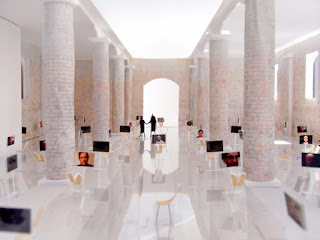Week 4- Medicine, Technology, and Art

This week we studied medical technologies and art and found that the two have always complemented each other. In Vesna’s lecture 1, she explains how it began with human dissection and has evolved into X-rays and MRIs. These inventions are critical for the saving of lives and have stemmed from art. She continues in lecture 2 explaining how technology began existing in hospitals at the beginning of the twentieth century and it was considered art. Medicine is an area that continues to evolve by demand and the help of technology. There are always new discoveries that can help advance the field and help humanity. The MRI is a gr eat example of the combination of medical technology and art. In her essay, Casini claims “I experienced both the rhythm of MRI and the creative possibilities that it holds” (Casini 77). She states that the MRI not only has a medical purpose, but can also be seen in an artistic way. When I further researched MRIs, I found that they were commonly used i



